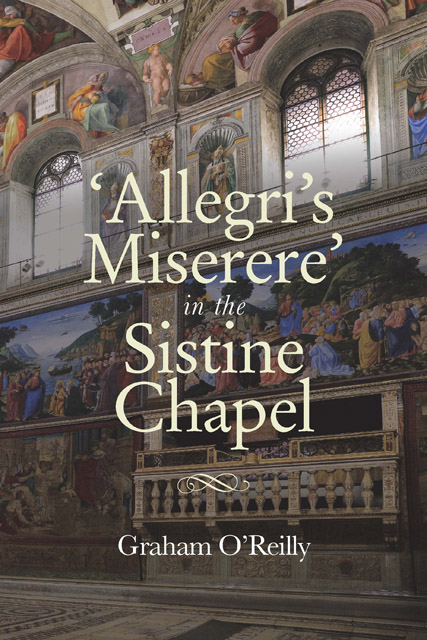Book contents
- Frontmatter
- Contents
- List of illustrations
- List of tables
- List of music examples
- Acknowledgments
- Note on the text
- Introduction: myth and reality
- Part One The Sixteenth and Seventeenth Centuries
- Part Two The Eighteenth Century
- Part Three The Nineteenth Century
- Part Four Performing the Miserere in the Twentieth Century
- Part Five Appendices, Editions and Notes
- List of appendices
- Bibliography
- Index
15 - Aspects of performance practice 1 – Performing pitch
Published online by Cambridge University Press: 13 January 2023
- Frontmatter
- Contents
- List of illustrations
- List of tables
- List of music examples
- Acknowledgments
- Note on the text
- Introduction: myth and reality
- Part One The Sixteenth and Seventeenth Centuries
- Part Two The Eighteenth Century
- Part Three The Nineteenth Century
- Part Four Performing the Miserere in the Twentieth Century
- Part Five Appendices, Editions and Notes
- List of appendices
- Bibliography
- Index
Summary
Without doubt the single most surprising aspect of the Papal Choir’s performance practice to be revealed by this research is its attitude to written pitch. As already noted in Chapters 9 and 10, there is no reason to suppose that the tradition of upward transposition of the Miserere by at least a third, widely reported from the end of the eighteenth century onwards, was not already well established rather earlier. It seems clear also that it was not only the Miserere which was so treated. Exactly when this started is however impossible to determine with any certainty. Was the choir already singing very high in 1700, or even earlier? If so, what catalysts could have provoked such a development?
Two important events stand out. Between them they determined the future of sacred music in Italy – in many ways in Europe as a whole – and their influence started to be felt in the early years of the seventeenth century. Until then, most Italian choirs did not have the means to sing in what we would now call the ‘treble’ range, as the highest parts were taken by either by alti naturali (male altos, as in the Papal Chapel) or by boys. In both cases, they would rarely sing higher than e″ – soprano falsettists have always been extremely rare, and in the sixteenth century only in England do boys appear to have been seriously trained to use their ‘treble’ range. Nor were the higher notes necessary in polyphonic music of the time when it was written in normal clefs, the chiavi naturali, the uppermost clef of c1 defining precisely the upper limit of the range. However, music was often notated very much higher than this, using chiavi alti – high clefs – in which the upper clef was g2, which implies a range rising to g″ and beyond. How then was it performed?
Confusion about performing pitch during the Renaissance is caused by our still imperfect understanding of the rationale and practice of chiavette – transposing clefs. Renaissance polyphony was based on the eight church modes used in Gregorian chant. To drastically simplify the situation, in fact there were only four modes, but each existed in two forms, known as authentic and plagal, each pair being based on the same scale and final (cadence note) but with different ambitus (compass) and reciting note.
- Type
- Chapter
- Information
- Allegri's Miserere in the Sistine Chapel , pp. 217 - 226Publisher: Boydell & BrewerPrint publication year: 2020



